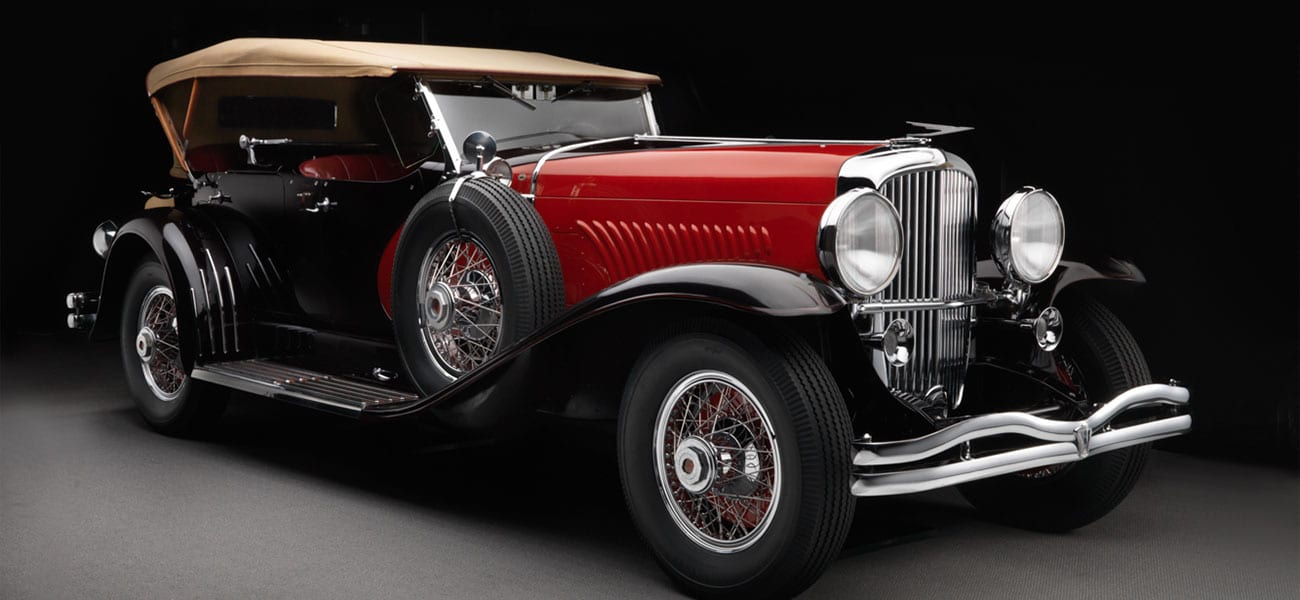Tech Specs
Eight-cylinder in-line engine, twin overhead camshafts, four valves per cylinder, 420 cubic inches, 265 hp at 4200 rpm.
Before/After
1930 Duesenberg


About the 1930 Duesenberg Model J Dual Cowl Phaeton
“265 Horse Power…116 Miles Per Hour,” The Motor headline screamed in 1928. “…Chassis priced at $8,500.” The new Model J Duesenberg’s power and performance would excite the public. The Duesenberg policy excited the American coachbuilding industry: all cars were to be custom made.
Since the close of World War I, the idea of tailoring an automobile to personal preference had enjoyed wide appeal amongst people who could afford to spend from half-again to considerably more than the chassis price to put a body on an automobile. Custom body houses – many of them descendant from prominent Nineteenth Century carriage builders – flourished. The Duesenberg seemed heaven-sent to perpetuate that pleasant situation.
No two Duesenbergs were precisely alike. How custom a car was depended upon the customer. If desired, an entirely unique creation could be had. Most clients, however, preferred to go with variations on the themes in Duesenberg’s portfolio. Prior to introduction, the company had sent advance blueprints of the Model J chassis layout to America’s top coachbuilders to invite design sketches for consideration for that portfolio. Chassis layout included radiator grill, hood, headlamps, fenders, running boards and bumpers to preserve marque identity. The remaining “identity” was the coachbuilder’s.
Over twenty American coachbuilders dressed the Duesenberg, none more handsomely than LeBaron Carrossiers of New York City. Rhythmic curves were a company forte. The “sweep panel” LeBaron dual cowl phaeton proved to be the most popular four-door Duesenberg. And of the several LeBaron designs for Duesenberg, this one was the most popular as well. Total LeBaron production for the Model J was thirtythree bodies.
Custom coachwork crashed with Wall Street, alas, and coachbuilding firms failed with rapidity during the Depression. Just Derham and Inskip survived the Second World War, only to succumb soon after. As for LeBaron, it was bought by the Briggs Body Company of Detroit, which in turn was acquired later by Chrysler. Chrysler chose to revive the name in its model line-up. LeBaron’s custom tradition remained history.
Photos – Peter Harholdt














